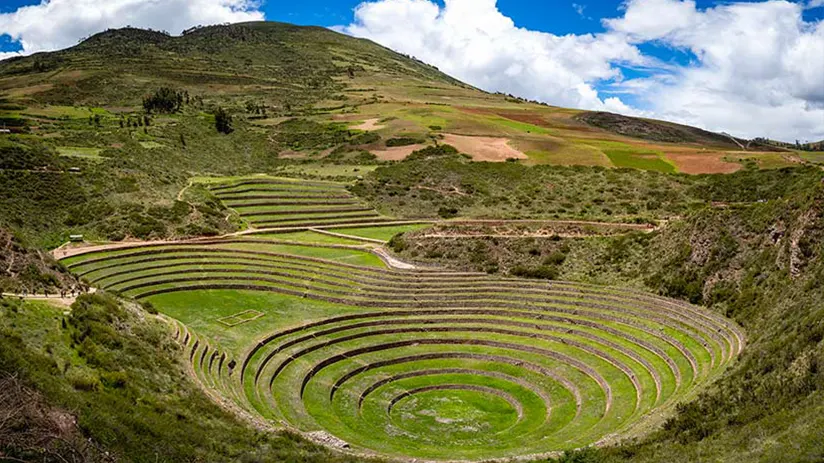Just over 35 kilometers away is one of Cusco’s most underrated attractions. The Moray ruins are impressive Inca ruins. These beautiful ruins are in the Sacred Valley, near the Imperial City.
This place is both impressive and magical. It remains relatively tranquil, free from large crowds of travelers and tourists. Despite its popularity as a local attraction, you can still enjoy a peaceful visit.
People often combine this beautiful attraction with the Salinas de Maras on different tours of Cusco. But it is a great alternative to explore if you have time. That is why, together with Machu Travel Peru, we decided to explain everything about the Moray ruins.
Everything you need to know about this incredible place
- What is?
- History of the ruins
- The origin
- Where is located?
- How to get there from Cusco
- Function and purpose
- The best time to visit
- What to do
What is?
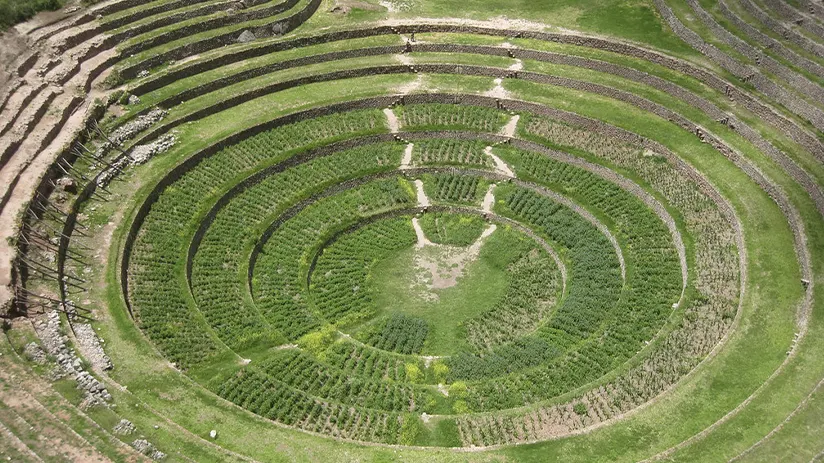
So, what is Moray in Cusco? The Moray Ruins are famous Inca vestiges to visit. They are located not far from Imperial City. These ruins comprise three circular terraces named after Muyus in the Quechua language.
From the highest to the lowest terrace, they descend about 150 meters, 490 feet high. Each of the Muyus has about 12 levels of terraces. In addition, the largest Muyu has a diameter of about 182 meters or 600 feet. An impressive natural landscape surrounds these depressions, with imposing mountains of the Peruvian Andes.
If you are planning a trip to Peru, you should not include this destination on your list. Contemplating these ruins is a wonder that you should not miss on your next visit.
History of the ruins
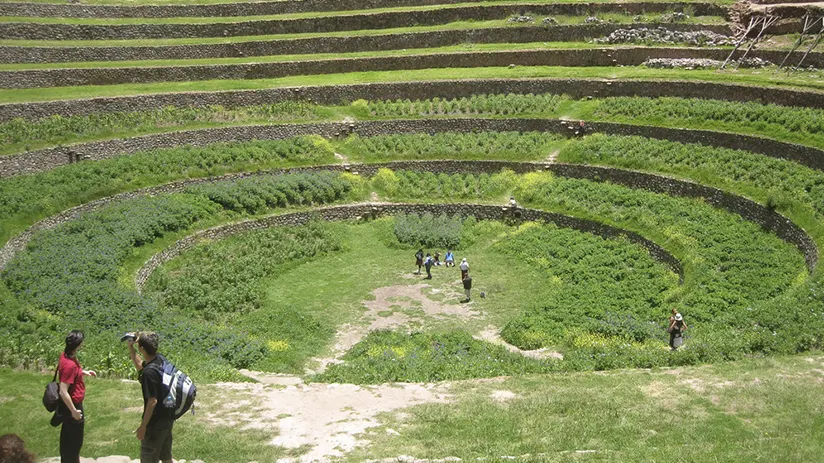
Who built Moray, Peru? The excavations at the site revealed that cultures predating the Incas likely constructed the lower terraces. People assume that the Wari culture flourished in the area during the 6th to 10th centuries.
Today, we appreciate that the Inca Empire mainly created the ruins. But when was this place built? Scholars believe they built it between the 12th and mid-14th centuries, although there is little certainty.
Shirppe Johnson discovered it in 1932 on an expedition while flying through the area. He could see a sector with platforms like concentric rings from the sky. Each circle formed is a terrace or platform that overlaps another, creating various circles that expand.
You can go from one circle to another through the different projecting stones nailed to the wall. However, something surprising to remember is that the locals used the ruins until 1970. Local families used them for agriculture. However, after 1970, the National Institute of Culture established new measures.
So now, it only functions as a tourist attraction. Today, it is a reasonably attractive Inca complex and one of the things to do around Cusco.
The origin
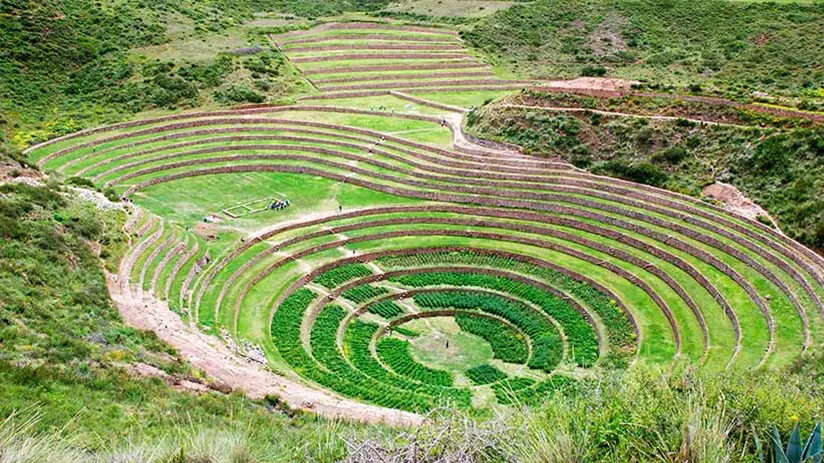
Not much is known about Moray’s origin. However, many theories and studies suggest that mysticism and magic explain it.
The most popular theory is that a meteorite fell during the Inca era, creating craters. The Incas then used these craters to their advantage.
Edwin Salazar, the author of the book Inka Astronomy, emphasizes this theory. This theory dates back to 1960 and explains how a giant asteroid divided as it entered the Earth’s atmosphere. When it impacted, it left numerous craters located to the southwest.
Many academics have mentioned that the Incas managed the craters, preventing their continuous erosion by building different platforms.
The builders constructed the archaeological site with the different platforms arranged concentrically. This theory makes more sense since, in other ancestral cultures, the craters or impact sites of different fallen meteorites used to be worshiped. Today, it is an important place to know if you want to enjoy tourism in Peru.
Other theories
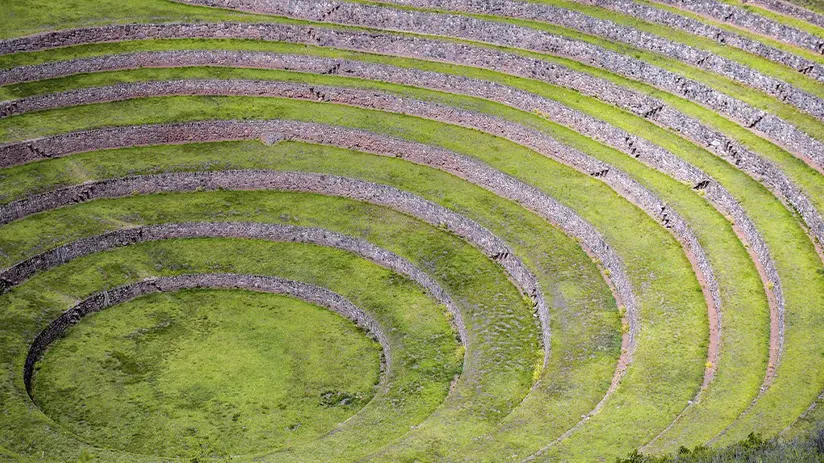
Despite this, there are also other theories about the purpose and origin of the Moray ruins. Some locals and locals from the surrounding communities tell stories that date back to Inca times.
They mention that in Inca times, different celebrations and ceremonies took place in this place. Even today, many locals still gather to celebrate Moray Raymi. There is also the theory that it was a kind of amphitheater for Inca ceremonies.
Another theory assumes that it was an open-pit mine built by Inca civilizations. After the raw materials ran out, they built agricultural terraces to reuse the site. This theory gains strength when one considers the extraordinary task of excavating and building these ruins in such a symmetrical way.
Finally, another theory suggests that it was an alien landing site where the landing of different alien ships formed the depressions. Putting aside the theories, it cannot be denied that it is a place of complete mystery and charm. So, it is unsurprising that it is one of the best things to do in Sacred Valley.
Theories aside, it is a place full of mystery and charm, so unsurprisingly, it is one of the best things to do in the Sacred Valley. Another theory assumes it was a kind of open-pit mine built by Inca civilizations. After the raw materials ran out, they built agricultural terraces to reuse the site.
Where is located?
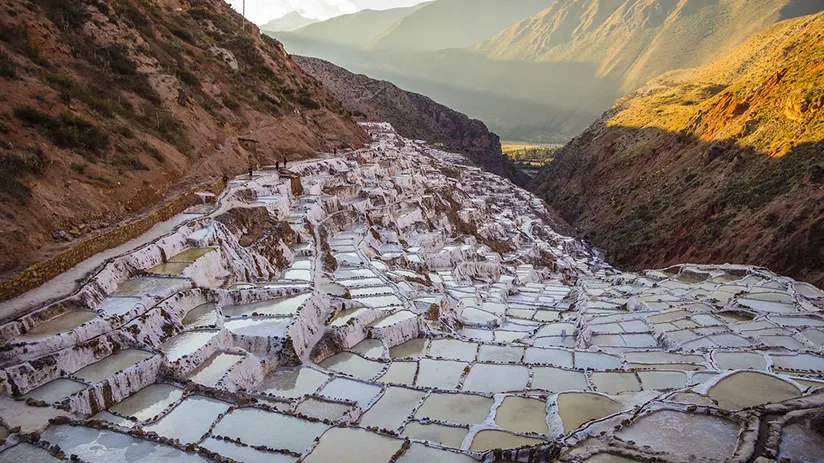
The beautiful platforms sit 7 kilometers from the Maras Salt Flats. For this reason, many tours in Peru often combine these two attractions. To be exact, they are approximately 38 kilometers northwest of Cusco, within the Sacred Valley. To get to the ruins, it is possible to take the road from the town or a deviation from the main road.
Moray is situated in the Maras district within the Sacred Valley, part of the Urubamba province in the Cusco department.
The ruins occupy approximately 36 hectares and are fascinating to see.
How to get from Cusco?
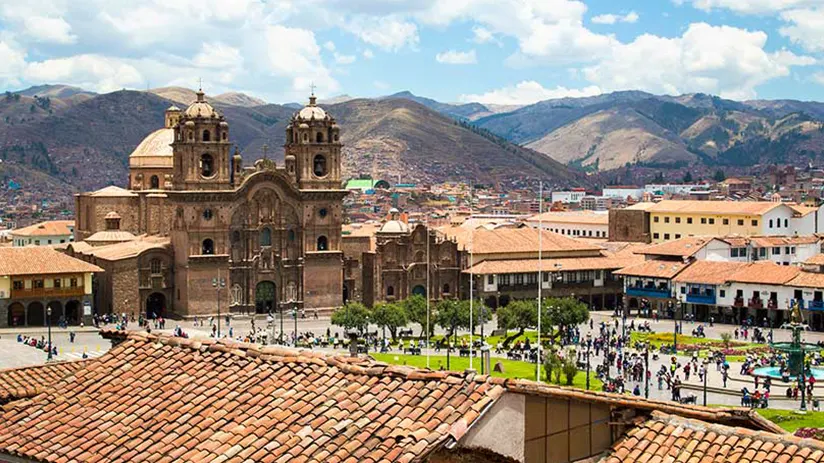
You cannot miss this incredible place if you plan to explore the entire Cusco tourist map. Book a tour with a tour operator or agency to quickly get there. You can also take a taxi from the Sacred Valley, although it would be expensive (up to 80 Soles).
You can even take the adventure option and go by bike from Chincheros. But if you are looking for a guide to accompany you, you must take the first option of booking a tour. You can always use our Cusco travel tips to avoid attractions like this one.
Function and purpose
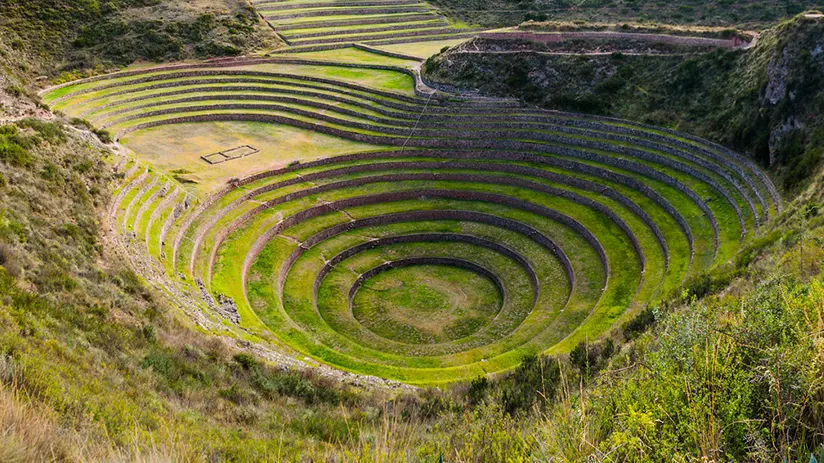
The functions of the archaeological site of Moray are still discussed today. However, it is often believed to be an “agricultural research center” of the Incas.
Experts still debate about the terraces at Moray, but they generally consider them an Inca agricultural research center. The arrangement of the different platforms produces a spectrum of varied microclimates in each concentric circle.
They range from higher to lower temperatures as you go outside. The company distributes all the platforms across 12 different levels. The main four belong to Sector I, the following four to Sector II, and the rest to Sector III.
The entire complex would contain about 20 or more scale ecological zones. Usually, this site served the Incas in calculating the annual production along the Tahuantinsuyo and the Sacred Valley map. The Incas were very skilled in the management of the Moray terraces. The Incas are believed to have used this place to measure the annual production of their empire.
Sector I soils tend to be much more humid and have lower temperatures. Sector II soils have an average temperature of 2 to 3 degrees higher. Sector III soils can reach even higher temperatures, depending on their exposure to the sun.
Scientists discovered this place, and if you are interested in other activities, you should not miss this incredible attraction. We recommend adventure sports in the Sacred Valley.
The best time to visit
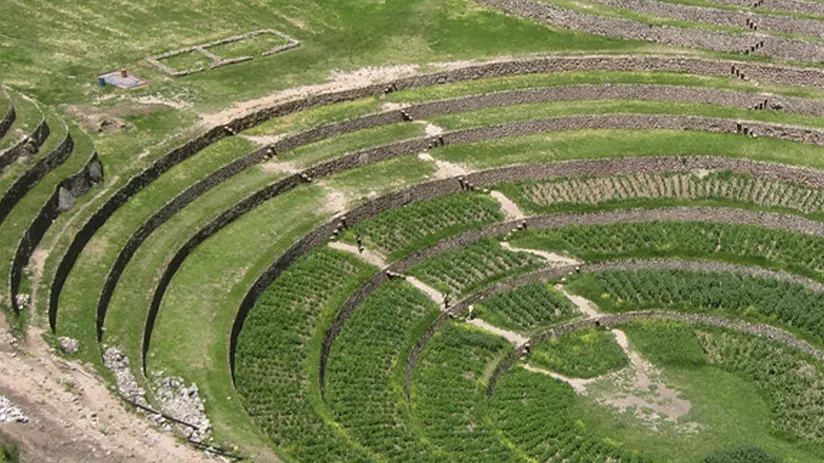
The city of Cusco experiences two seasons. The rainy season usually runs from December to March, during which Cusco receives most of its rainfall. The climate can be quite humid, with frequent rains and varying temperatures that remain cool.
The Dry season Runs from April to November. During this period, Cusco experiences less rainfall, with sunnier days and cooler temperatures at night. It is the high season for tourism due to the more favorable climate for outdoor activities.
However, the best time to visit Moray is from May to October in the dry season. These months offer stable weather and minimal rainfall, perfect for immersing yourself in the intricate terraces and breathtaking landscapes. Let this remarkable site’s serene beauty and rich history ignite your imagination and inspire your journey.
If you’re aiming for fewer crowds and better prices, consider visiting in the shoulder months of May or October. Remember that temperatures can be pretty cool, especially in the evenings, so pack accordingly!
What to do
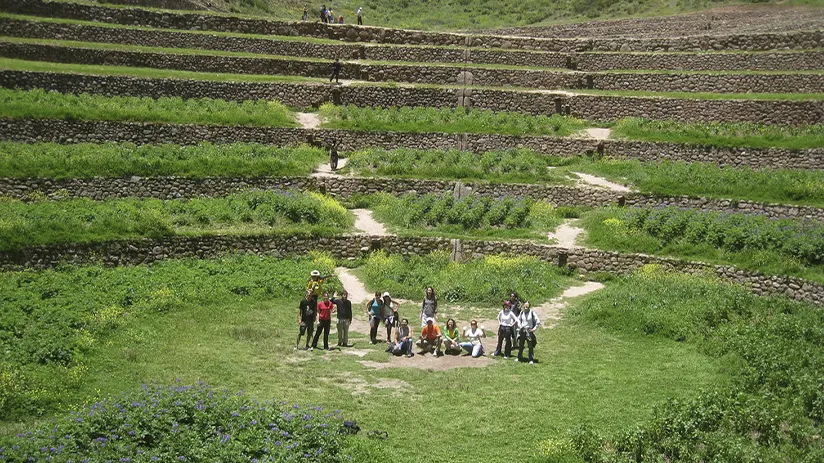
In Moray, you can enjoy various activities:
Explore the Terraces
This place is famous for its impressive circular depressions terraces. The Incas used these structures to experiment with different crops at various altitudes and microclimates. You can walk around the site and observe the different levels and irrigation systems.
Photography
The site offers spectacular views and unique landscape formations, making it ideal for photography. The concentric circles and the surrounding scenery are visually striking.
Learn About Incan Agriculture
The site provides insights into the Incan agricultural laboratory. Local guides often explain the terraces’ historical and scientific significance.
Visit Nearby Ruins
Moray is close to other interesting sites, such as the Maras salt mines and the Ollantaytambo archaeological complex. Consider visiting these as part of a broader tour of the Sacred Valley.
Hike in the Area
Trails around Moray offer panoramic views of the valley and the terraced ruins. Hiking is a great way to see the landscape from different perspectives.
Cultural Interaction
Engage with local communities to learn about traditional farming practices and the influence of Incan heritage on modern agriculture.
Visiting Moray or any of the regions of Peru on an excursion is a fantastic idea. Remember, the guides provide unique historical facts and explanations.
“A TRAVELER WITHOUT THE ABILITY TO OBSERVE IS LIKE A BIRD WITHOUT WINGS”
We hope that, with the help of Machu Travel Peru, we’ve inspired you to explore this wonderful and less-traveled attraction. This remarkable destination is a must-visit to truly immerse yourself in the rich history of the Inca Empire.
You can always consult with our advisors to do a private tour of the best attractions around Cusco. Our team of consultants will be happy to help you plan the trip of your dreams.
